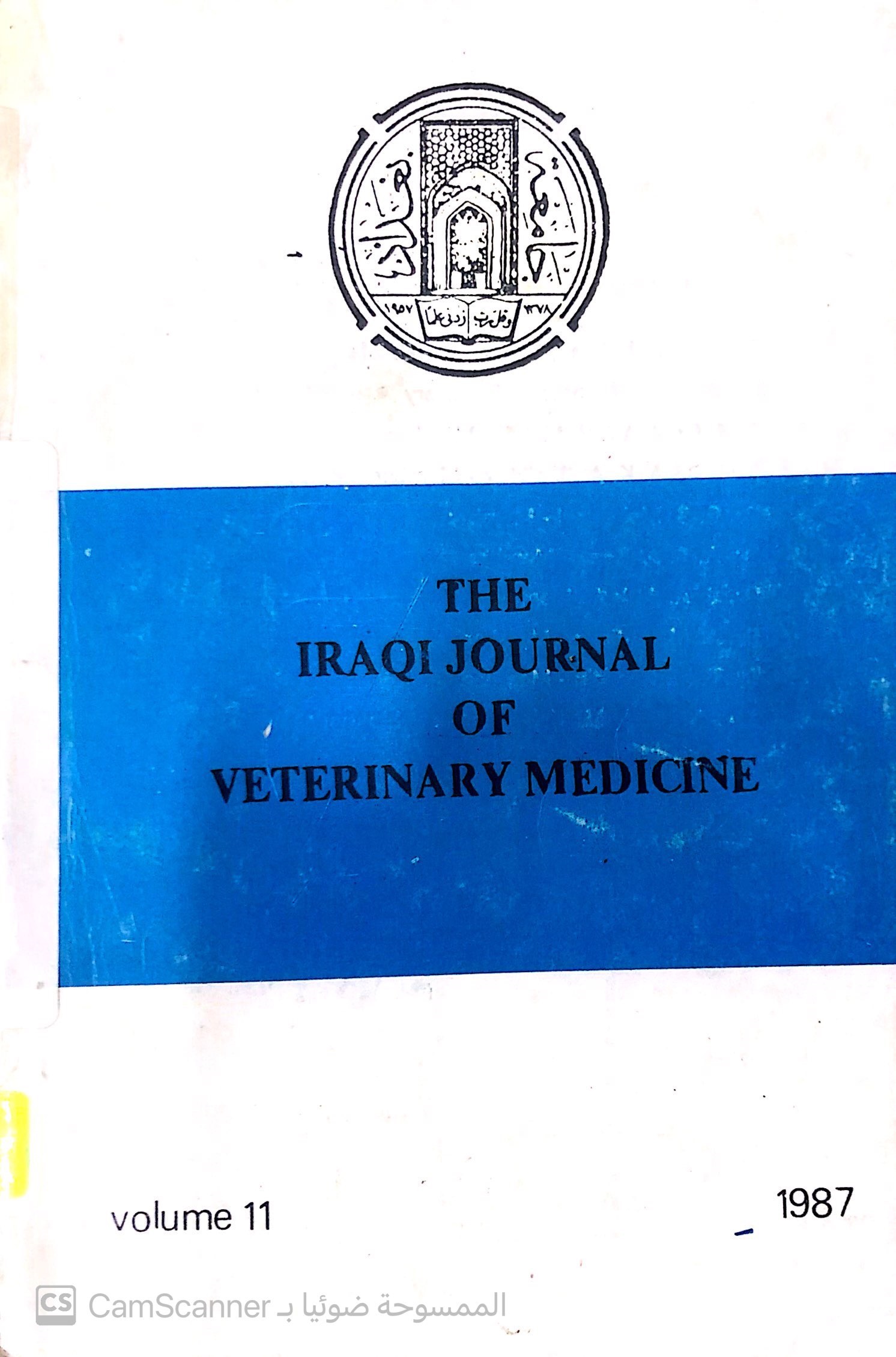APPLICATION OF OVASCAN AND PROGESTERONE CONCENTRATION FOR PREDICTION OF OVULATION DURING ESTRUS IN THE MARE
Main Article Content
Abstract
The estrous cycle of 8 Arabian mares was followed for one year, by visual observation of the estrous behaviour and by teasing with a stallion. Serum progesterone concentration was determined by RIA, Vaginal electric resistence was studied with aid of Ovascan, comapared with the changes in the reproductive tract as determined by rectal examination for prediction of ovulation. The changes in the reproductive tract and the behavioural manifestations expressed during the cycle indicated that the experimental mares were exhibiting estrous year arround, however, 75% of the cycles were observed during the months from March to August and 25% during the. rest of the year. The total number of cycles exhibited by the mares averaged 68 cycles, of these 22 cycles were observed during Summer, 20 during Spring, decreased to 13 cycles during Fall and 13 during Winter. the length of the estrous cycle ranged between 24-26. 31 days, the average estrus length ranged between 5.5-8.6 days andthe luteal phase ranged from 19.04-24.87 days. The ovascan readings showed decline by 50 degrees, constantly, a day preceeding ovulation, compared to the readings during the rest of estrus days and this finding was confirmed by rectal palpation of the reproductive tract in succeeding day which disclosed the disappearance of the mature follicle and the: presence of the ovulation site on the ovary, consequently, the estrous signs faded away gradually within 24-48 hours of the ovuletion. Serum progesterone concentration, during’ the estrus and one day before ovulation ranged between 0.58 -1.05 ng/ml, while mean luteal phase concentration was 10.2820.89 ng/ml. The results of the present study disclosed that the mares in Iraq could be bred any time of the year and it is most probable that measurement of progesterone concentration will have more practical application for monitring ovarian activity and estrus prediction, if. a rapid system of measurment made avilable (as progesterone strip). The application of Ovascan proved effecient tool for prediction of ovulation in the mare, providing information for synchroniztion of service with ovulation, a mean augmenting fertility and avoiding rectal palpation which hinder service.
Downloads
Article Details
Section
How to Cite
Publication Dates
References
Al-Murrani, W. K. and Rasheed; A. J. A. (1982): Some aspects of fertility in Arabian Mares in Iraq. Proc. 2nd, World Cong. on genetics applied to livestock production. Madrid.
Asbury, A. C. (1982): The reproductive system of Mares. In Equine Medicine & Surgery. (Mansmann, M. ed.,) 3rd ed., V. 2: 1231-1335. Amer. Vet. Publication Inc.U.S.A.
Bain. A. M. (1957): Estrus and infertility of the thoroughbred mare in Australia. J. me. Vet. Med. Assoc. 131: 179-189.
Beaver, B. V. (1981): Sexual behaviour in’ Mares. Vet. Med. Small Anim. Clin. 76: 167-168.
Ginther, O. J. (1974): Occurrence of anestrus, estrus, diestrus and ovulation over a 12-month period in mares. Amer. J. Vet. Res. 33: 1173-1179.
Ginther, O. J. (1980): Physiological and artificial control of estrous cycle rhythmic. Reproductive biology in the mare. Basic & applied Science. Ch. 7, pp. 169-179. Wisconsin.
Hughes, J. P. (1980): Clinical examination and abnormalities in the mare. In Current Therapy in Theriogenology (Morrow, D. A. ed., Ist ed., 721-724. W. B. Saunders Company, Philadelphia.
Hughes, J. P.; Stabenfeldt, G. H. and-Evans, J. W. (1972): Estrous cycle ovulation in the mare. J. Amer. Vet. Med. Assoc. 161: 1367-1374.
Neely, D. P. (1983): Reproductive Endocrinology and Fertility in the mare. In A_ review for equine practioners (Neely, D. P.; Irwin, K. M.: Liu, D. V. and Robert, B. H., ed.) pp. 12-21. Hoffmann Laroche Inc., U.S.A.
Plotka, E. D.; Witherspoon, D. M.; Schmoller, G. C. and Goetsch, D. D. (1974): Preovulatory changes in peripheral plasma progesterone and estrogen concentration in the mare. Amer. J. Vet. Res. 36: 1359-1362.
Sane, D. C. (1982): Reproduction in farm Animals (Theriogenology). Varghese Publishing House, Bombay.
Sharp, D. C.; grubaugh, Zavy, M. T. and Vernon, M. W. (1980): Seasonal variation in melatonin secretory patterns in mares. J. Anim. Sci. Suppl. 1 Abst. 535 p.327.
Squires, E. L.; Wintworth, B. C. and Ginther, O. J. (1974): Progesterone concentration in blood of mares during the estrous cycle, pregnancy and after hysterectomy. J. Anim. Sci. 39: 759-767.
Stabenfeldt, G. H.; Hughes, J. P. Evans, J. W. and Neely, D. P. (1974): Spontaneous prolongation of luteal





